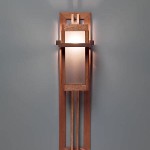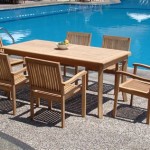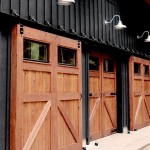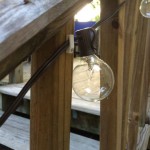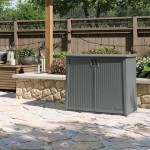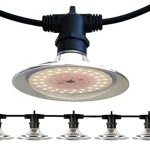Outdoor Hanging Lanterns For Trees: A Comprehensive Guide
Outdoor hanging lanterns offer a versatile and aesthetically pleasing way to illuminate outdoor spaces, particularly when suspended from trees. They provide ambient light, enhance the visual appeal of gardens and patios, and contribute to a welcoming atmosphere for evening gatherings. Selecting the right lanterns and installing them securely requires careful consideration of various factors, including lantern type, power source, hanging method, and safety precautions.
Choosing the Right Lantern Style and Material
The market presents a wide range of outdoor hanging lanterns, each possessing unique characteristics in terms of style, material, and light output. The selection process should be guided by the desired aesthetic, the overall design of the outdoor space, and the prevailing weather conditions.
Material Considerations:
Lanterns are commonly constructed from materials like metal (e.g., wrought iron, stainless steel, aluminum), glass, plastic, and weatherproof fabrics. Metal lanterns offer durability and a classic aesthetic, but they may be susceptible to rust if not properly treated. Stainless steel and aluminum are more resistant to corrosion and suitable for coastal environments. Glass lanterns provide a refined look and allow for unobstructed light transmission, but they are more prone to breakage. Plastic lanterns are lightweight, inexpensive, and available in various colors and designs, but they may not possess the same level of aesthetic appeal as metal or glass options. Weatherproof fabrics, often used in conjunction with metal frames, create a soft, diffused light and are ideal for creating a cozy ambiance.Style Considerations:
Lantern styles range from traditional to contemporary, with options to suit diverse design preferences. Traditional lanterns often feature intricate metalwork, antique finishes, and classic shapes, evoking a sense of timeless elegance. Contemporary lanterns tend to be more minimalist, with clean lines, geometric shapes, and modern finishes. Moroccan-style lanterns incorporate ornate patterns and vibrant colors, adding an exotic touch to outdoor spaces. Tiki torches, while not technically lanterns, offer a rustic and tropical vibe, providing both light and insect repellent when fueled with citronella oil. String lights, often incorporating small lanterns, provide a festive and whimsical atmosphere, ideal for parties and celebrations.Light Output and Temperature:
The amount of light emitted by a lantern is measured in lumens. Higher lumen values indicate brighter light. The desired light output depends on the intended use of the illuminated area. For ambient lighting, lower lumen values are sufficient, while for task lighting, brighter lanterns may be necessary. Light temperature, measured in Kelvin (K), affects the color of the light. Warmer light (lower Kelvin values, e.g., 2700K) creates a cozy and inviting atmosphere, while cooler light (higher Kelvin values, e.g., 5000K) provides brighter, more focused illumination. LED bulbs offer a wide range of light temperatures and are energy-efficient, making them a popular choice for outdoor lanterns.Power Source Options: Solar, Electric, and Battery-Operated
The power source significantly impacts the versatility and convenience of outdoor hanging lanterns. Common options include solar-powered, electric, and battery-operated lanterns, each with distinct advantages and disadvantages.
Solar-Powered Lanterns:
Solar lanterns harness sunlight to charge internal batteries during the day, providing light at night. They are energy-efficient, environmentally friendly, and require no wiring, making them easy to install in remote locations. However, their performance depends on the amount of sunlight received, and their light output may be lower than electric or battery-operated lanterns. Solar lanterns are best suited for areas with ample sunlight and for providing ambient lighting rather than bright task lighting. The longevity of the battery is also a key factor, with regular replacement necessary after a few years of use.Electric Lanterns:
Electric lanterns offer consistent and reliable light output, but they require access to an electrical outlet or hardwiring. Hardwired lanterns provide a permanent lighting solution, but their installation requires professional expertise and adherence to electrical codes. Plug-in lanterns are easier to install but require an outdoor-rated extension cord. Electric lanterns are suitable for areas where a reliable power source is readily available and where brighter light is desired. When installing electric lanterns, it's imperative to use weatherproof outlets and wiring to prevent electrical hazards.Battery-Operated Lanterns:
Battery-operated lanterns offer portability and convenience, allowing them to be placed in virtually any location without the need for wiring or sunlight. They are ideal for temporary lighting or for areas where other power sources are not available. However, they require regular battery replacement, which can be costly and inconvenient over time. LED battery-operated lanterns offer longer battery life than traditional incandescent models. Rechargeable batteries can mitigate the cost of replacement, but they require a separate charger.Safe and Effective Hanging Techniques for Trees
Securing lanterns safely to trees is crucial for both the longevity of the lanterns and the health of the trees. Improper hanging methods can damage the tree's bark, impede its growth, and pose a safety hazard if the lantern falls.
Avoid Direct Attachment to the Trunk:
Nailing, screwing, or wiring lanterns directly to the tree trunk should be avoided, as this can create wounds that are susceptible to disease and insect infestation. These methods also restrict the tree's natural growth and can eventually girdle the trunk, cutting off the flow of water and nutrients.Use Tree-Friendly Hanging Straps:
Tree-friendly hanging straps are designed to distribute the weight of the lantern evenly and prevent damage to the bark. These straps are typically made of nylon or polyester webbing and feature adjustable buckles or loops for easy attachment. The straps should be wide enough to minimize pressure on the bark and should be regularly inspected for wear and tear.Utilize Existing Branches:
Whenever possible, hang lanterns from existing branches that are strong enough to support the weight. Avoid hanging lanterns from small or weak branches that could break under the load. The branch should be at least several inches in diameter and free from signs of decay or disease. When hanging lanterns from branches, use rope or chain that is long enough to allow for natural movement in the wind. Ensure the rope or chain is also weather-resistant to prevent corrosion and degradation.Consider Weight Distribution:
The weight of the lantern should be evenly distributed to prevent excessive stress on any one branch. If hanging multiple lanterns from the same tree, space them out evenly to avoid overloading any particular area. For heavier lanterns, consider using multiple support points to distribute the weight more effectively. Regularly inspect the hanging points and adjust as needed to accommodate the tree's growth.Safety Precautions:
Always use appropriate safety gear when hanging lanterns from trees, including gloves, safety glasses, and a sturdy ladder. Ensure the ladder is placed on a stable and level surface and that someone is present to spot you. Be mindful of overhead power lines and maintain a safe distance when working near them. Before hanging any lantern, inspect it thoroughly for any signs of damage or defects. Replace any damaged lanterns immediately to prevent electrical hazards or structural failures.In addition to practical considerations, the placement of outdoor hanging lanterns can significantly impact the overall ambiance of the space. Grouping lanterns together can create a focal point, while scattering them throughout the trees can provide a more subtle and diffused light. Experiment with different arrangements to achieve the desired effect. Consider the surrounding landscape and choose lanterns that complement the existing foliage and architecture. The use of colored bulbs can add a touch of whimsy and create a festive atmosphere. By carefully considering these factors, homeowners can create a beautiful and inviting outdoor space that is both functional and aesthetically pleasing, using outdoor hanging lanterns suspended skillfully from trees.

Lanterns Suspended From Trees Use Led Remote Control Candles Inside So They Light Instantly With The F Outdoor Tree Lighting Backyard

Outdoor Hanging Tree Lanterns An Ideabook By Lisa Cohen

Create A Secret Garden With Hanging Tree Lights

Outdoor Hanging Tree Lanterns An Ideabook By Lisa Cohen

Solar Hanging Lantern Light Gift It 2

Festoon Lighting And Ivory Outdoor Lanterns Hanging Lantern Company

Capiz Lanterns Hanging On The Tree Outdoor Lights Decorating With Christmas

Lighting Ideas For An Outdoor Wedding Boho Blog Backyard Diy

Stun Your Guests By Decorating With Outdoor Lanterns Hanging Lantern Company

Create A Secret Garden With Hanging Tree Lights
See Also

